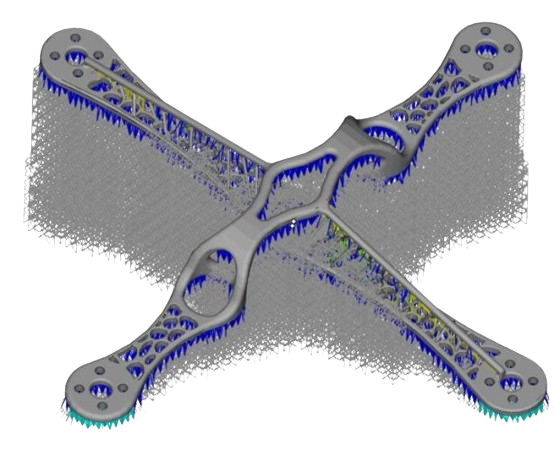The Indian metal additive manufacturing market is growing at a steady rate and its growth is fuelled with diverse opportunities and vibrant ecosystem. To understand the challenges and opportunities in metal additive manufacturing sector in India we interviewed Amace Solution.
In our conversation with Mr. Shreyans Khot, AGM, Additive Manufacturing & Mr. Shrinidhi Bhatt, Application Engineer at Amace Solutions, we focused on “first time right” prints challenge faced during metal additive manufacturing and how Amace Solutions resolved this challenge using Materialise e-Stage solution.
Amace Solutions is joint venture between Ace Designers and Ace Manufacturing Systems from the Ace Micromatic Group located in Bengaluru, India. They are a leading Metal Additive Manufacturing company in India and one of the first manufacturers of a Metal AM system in the country, with the capability to work with metal alloys such as Stainless Steel, Tool Steel, Titanium, Aluminium, Inconel, and other Ni based Alloys. Amace is also an End to End AM solutions provider with capabilities of supporting its customers with Pre Processing such as 3D modelling, simulation, analysis, additive design, topology optimisation, Post processing of printed parts such as heat treatment, machining, surface finishing etc,. to help our customers leverage on the potential of AM.
What are some of the key applications of metal 3D printing in India today?
In India, metal 3D printing is a boon for aerospace and defence, meeting increasing demands with intricate designs. The automotive sector utilizes it for rapid prototyping and customization, enhancing innovation. Additionally, the medical field benefits through personalized implants, showcasing the technology’s versatility. Metal 3D printing is pivotal, addressing unique needs in various industries across the country.
What challenges are you facing in metal 3D printing?
In metal 3D printing, achieving “first time right” prints is a challenge, often hindered by distortion and warpages resulting from improper support structures. The optimization of support structures is crucial to minimize wastages, especially when working with expensive materials like Titanium. Striking a balance between support effectiveness and material conservation remains a key focus in overcoming challenges within the metal 3D printing process.
What challenges you were facing in metal support generation with conventional support generation tools and how do you overcome the challenges?
The challenges in metal support generation tools led us to explore solutions, and We discovered Materialise e-Stage, a software that revolutionized our approach. Its more scientific methodology provides tested supports, significantly reducing support volume. This approach ensures a “first time right” outcome, minimizing the risk of failures and allowing prompt part submissions to clients without delays. The efficiency of Materialise software has streamlined our workflow, notably cutting down on pre-processing time and enhancing overall productivity.
Could you please brief us a bit on the work-flow advantage since using Materialise e-Stage?
Materialise e-Stage simplifies the workflow with its one-click support generation process. Its user-friendly design ensures that anyone can use it, eliminating dependencies on specific users. Additionally, the software allows for automation, enhancing efficiency and making the metal 3D printing process more accessible and user-independent.
What is your outlook on the expansion of metal 3D printing within the Indian market?
The outlook for the expansion of metal 3D printing in the Indian market is optimistic. With increasing applications in aerospace, defence, automotive, and medical sectors, the technology is poised for substantial growth. The demand for rapid prototyping, customization, and advanced manufacturing processes aligns with the capabilities of metal 3D printing. As awareness and adoption continue to rise, it is expected to play a pivotal role in shaping the future of manufacturing in India, contributing to innovation and efficiency across diverse industries.
What advice would you give to Indian companies that are considering adopting metal 3D printing?
For Indian companies considering adopting metal 3D printing, our advice is to view it as a transformative technology with immense capabilities. Understand all its facets, focusing on problem-solving and increasing efficiency. Rather than replicating yesterday’s parts with tomorrow’s process, consider redesigning components to fully leverage the potential of this technology. Embracing a wholistic approach and exploring new design possibilities will maximize the benefits of metal 3D printing, propelling their company towards innovation and competitiveness in the evolving manufacturing landscape.
Subscribe to AM Chronicle Newsletter to stay connected: https://bit.ly/3fBZ1mP
Follow us on LinkedIn: https://bit.ly/3IjhrFq
Visit for more interesting content on additive manufacturing: https://amchronicle.com


